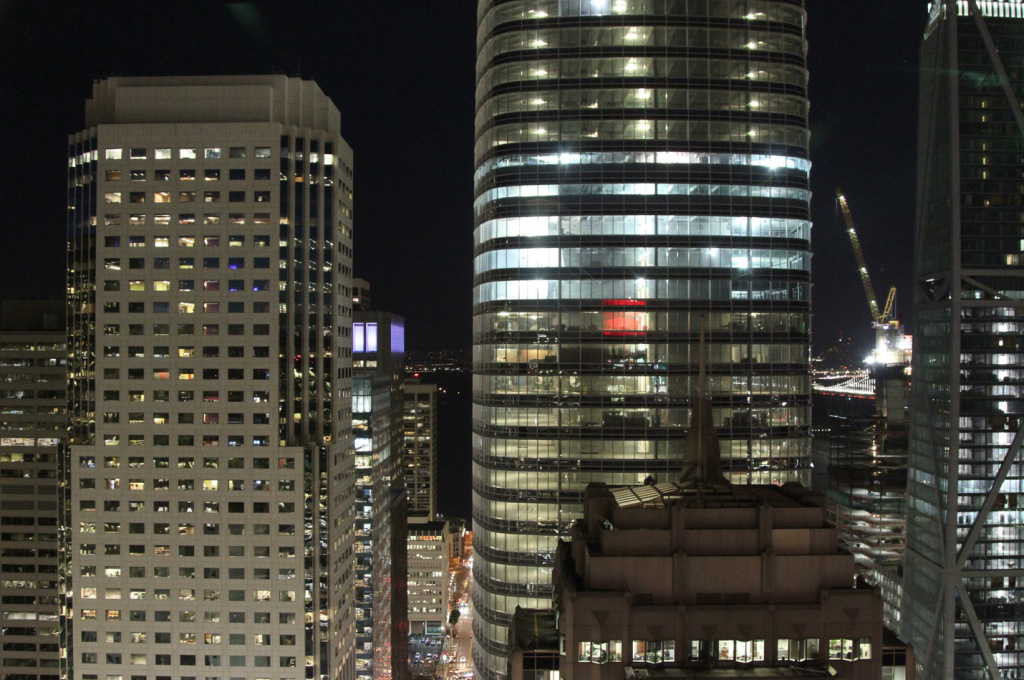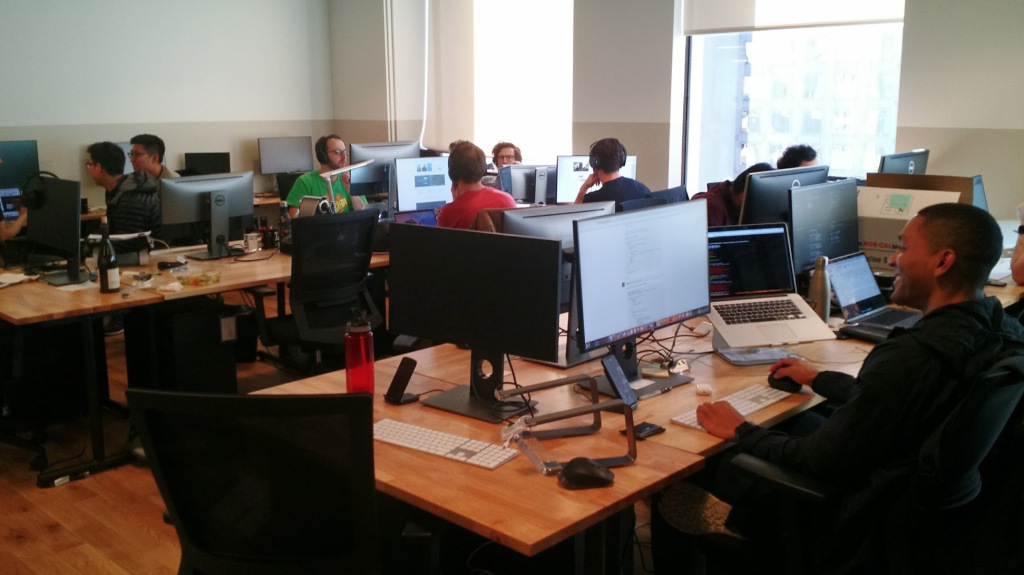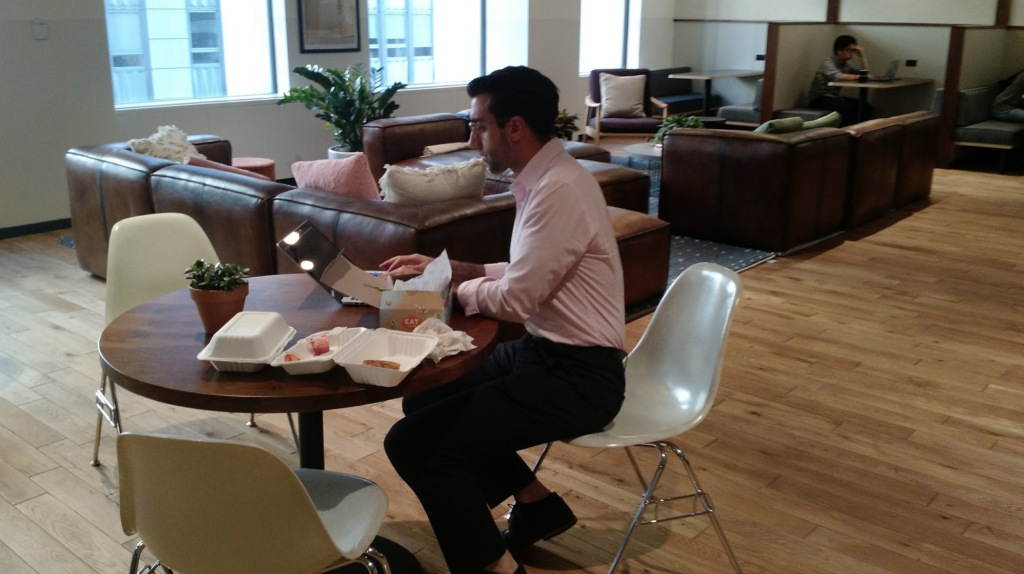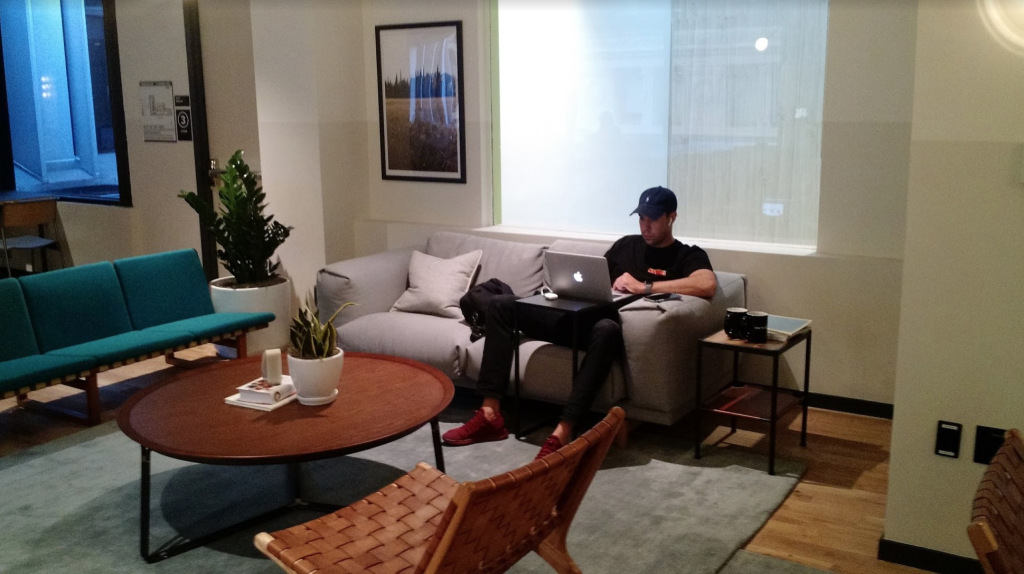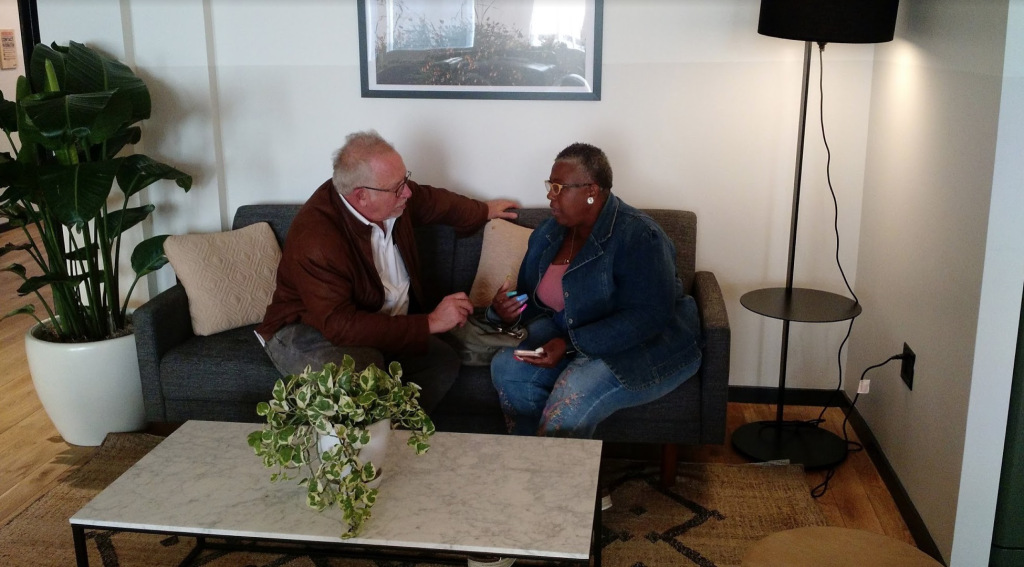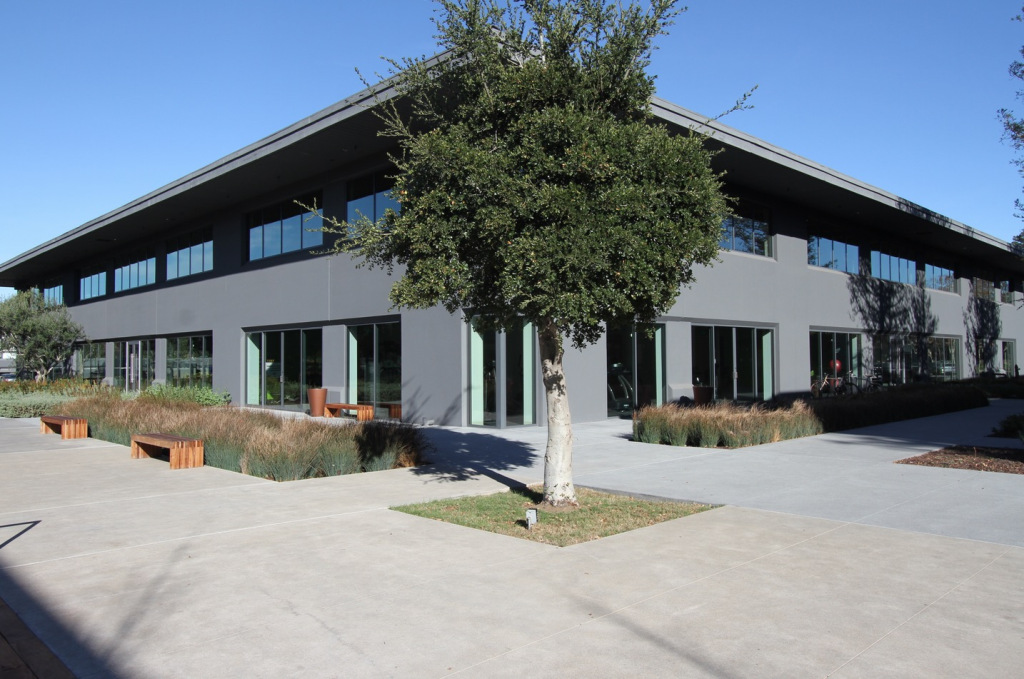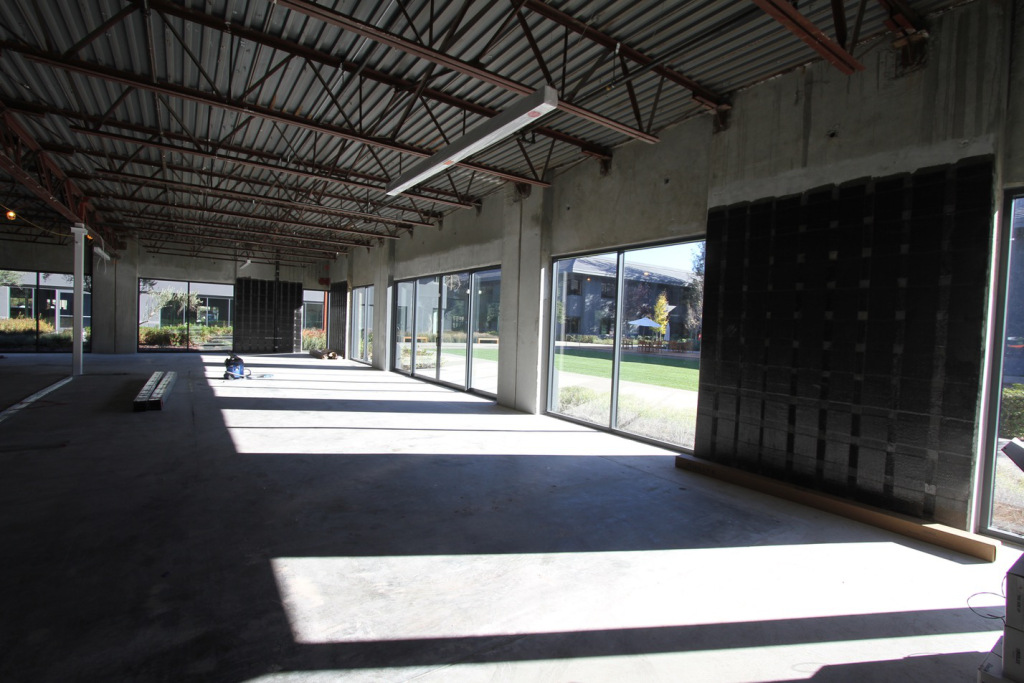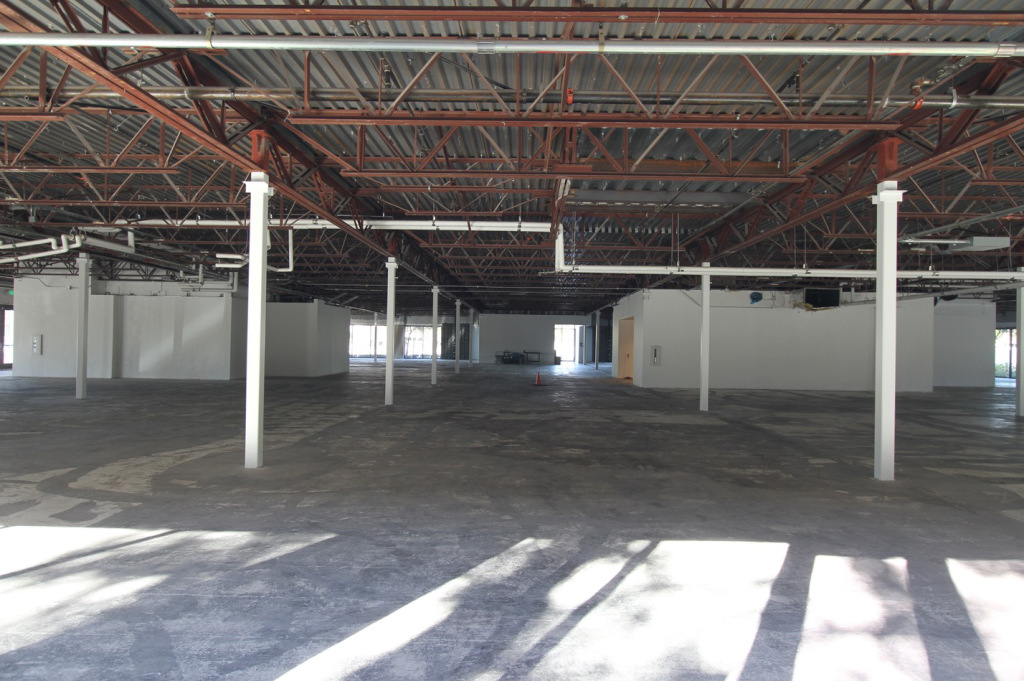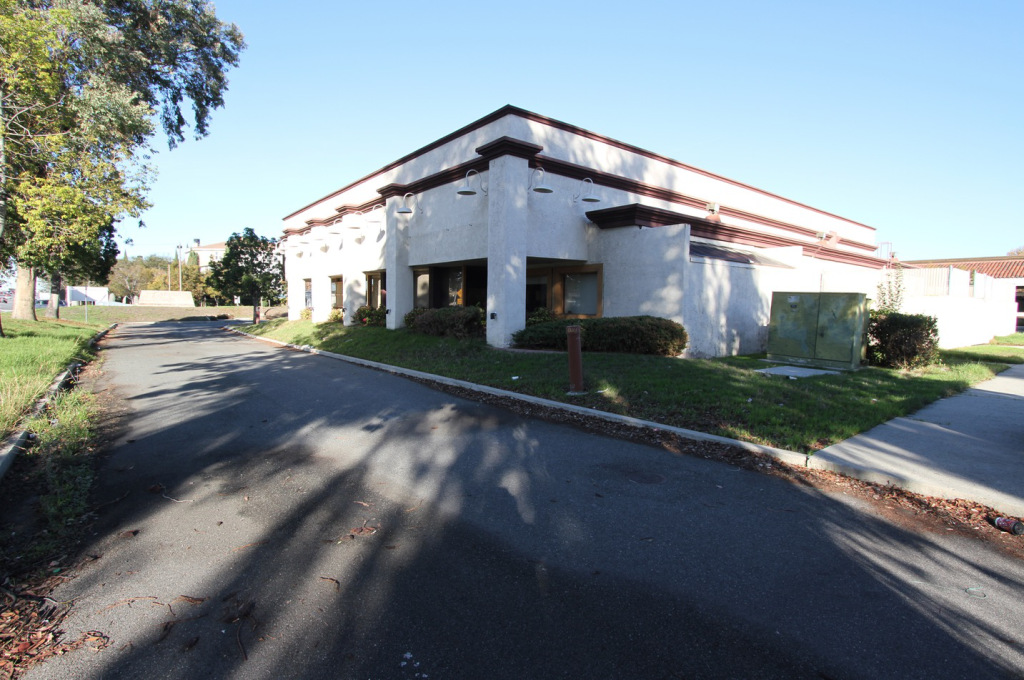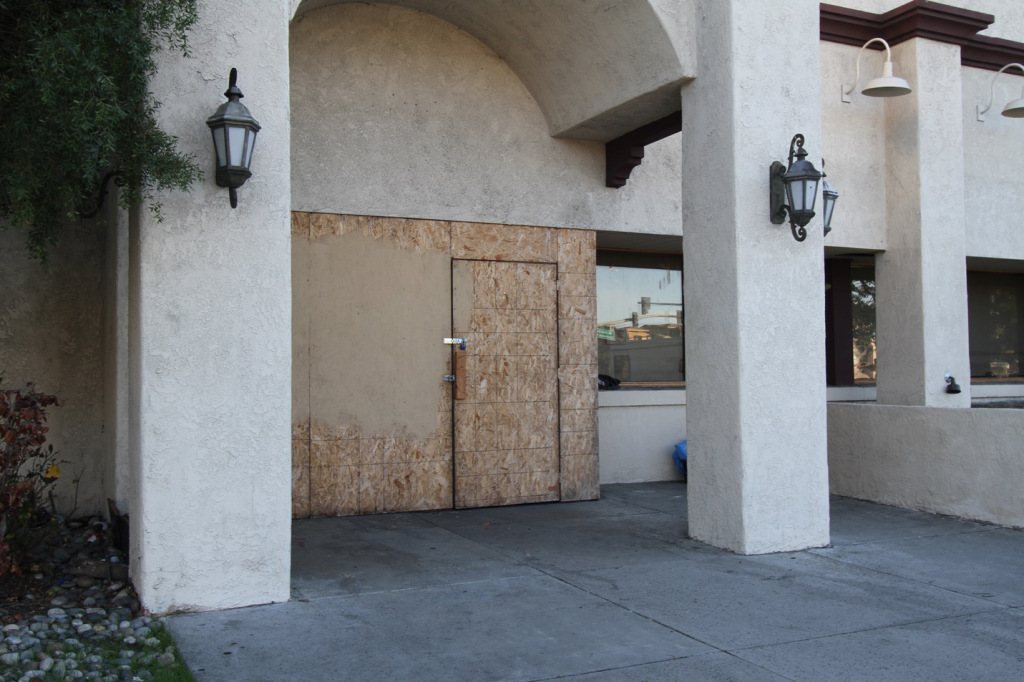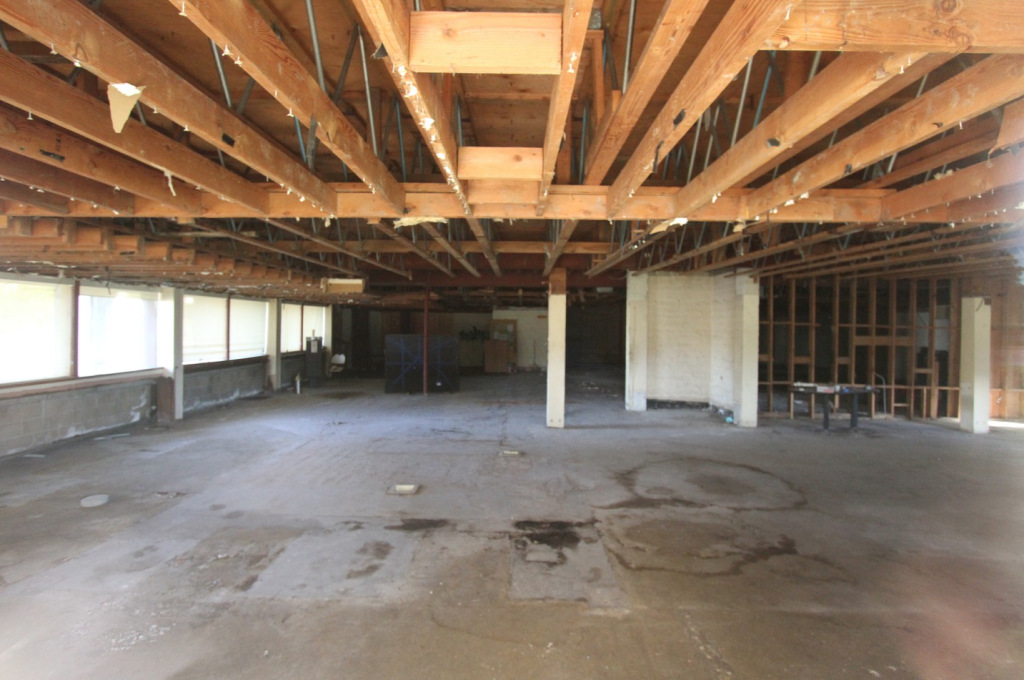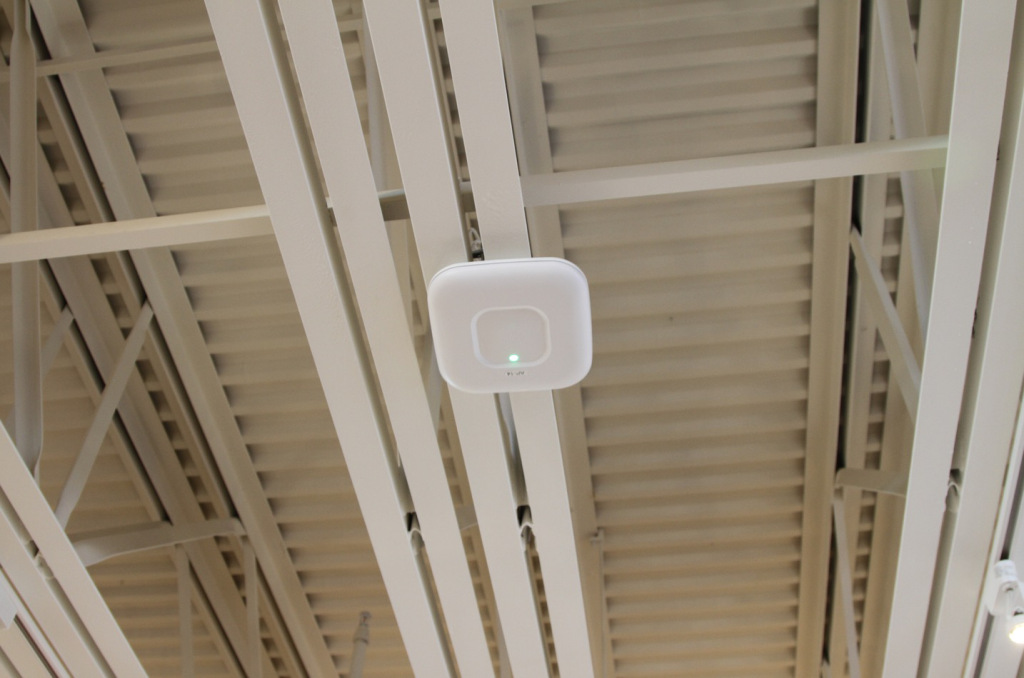From Co-Working to Co-Living
I recently followed a company that moved out of their old offices in a downtown skyscraper to their new offices in… a downtown skyscraper two blocks away.
The switch will save the company $2 million a year in rent and provide for significantly more flexibility as their particular needs change. The details and future implications are intriguing if you happen to be a certain kind of geek.
The office Christmas party doubled as a packing up and farewell event. Everything went into plastic crates for the movers to carry off to the new location.
The new place is part of the WeWork franchise. Individuals as well as entire companies become “members” of a global community rather than “renters” of space. Belonging to the WeWork operating system provides access to a la carte office equipment, services, a mailing address, and admission to all WeWork spaces around the world. A desk, a printer, or a conference room can be reserved for a business trip in London, Tokyo, Tel Aviv, or São Paulo. The pay-per-view model allows space to be used hyper efficiently only when and how it’s really needed. Members are encouraged to make use of each other’s services from tax accountants, caterers, graphic designers, photographers, computer coders, lawyers… whatever. It’s all part of what WeWork founders call a Capitalist Kibbutz.
I could go down a rabbit hole describing the woo woo philosophy espoused by the WeWork rah rah cheerleaders (I’m rolling my eyes) or link to any number of scathing criticisms along the lines of, “This is just another extractive corporate business model.” At the end of the day it’s a company that satisfies market demand and makes money for investors. *Shrug.* I’m agnostic. But I see an intriguing set of conditions coalescing to solve at least a part of the housing problem in select areas as WeWork ramps up WeLive.
What WeLive is creating is a new twist on a traditional residential hotel — sometimes called an SRO. These were extremely popular in the 1920s and consisted of studio apartments with minimal private amenities, but services available in the common areas of the building or in the immediate neighborhood. Lunch counters, late night diners, laundries, and movie palaces were near at hand. In some cases these were luxurious accommodations with daily room service. In others they were flop houses for the semi-indigent. WeLive is rebranding the genre. “Members” (not renters) can move in to fully furnished spaces for a month or several years and select as many or few additional serves as desired based on need and budget. And WeLive spaces are being co-located with WeWork offices.
I’ve spent enough time exploring the country to understand that most of what’s coming between supply and demand in the housing market is an alluvial delta of accumulated rules, regulations, and procedures — some governmental, many private — that gum up the works. Small projects get crushed by the endless permit process while giant projects somehow get approved — always at a very high price point. WeLive might be hatching a method of addressing the situation.
Here’s a suburban office park in Silicon Valley. Each year I attend various conventions in the area and spend my lunch breaks wandering around the neighborhood with my camera. This particular region is full of entirely empty office parks that remain vacant year after year. In some cases they’re slated for demolition to make way for larger projects once the exhaustive paperwork is complete and financing is secured. But sometimes there just aren’t enough commercial tenants available at the price property managers require given their accounting models. So huge amounts of space sit empty in the middle of a massive housing shortage. This dysfunctional system is ripe for disruption since billions of dollars are on the table for whoever can find a way to leapfrog all the crap.
Physically there’s no reason these buildings can’t be converted to living space. Multiple means of fire egress? Check. Fire sprinklers? Check. Elevators and handicap accessibility? Check. Ample parking? Check. Open space, landscaped berms, on site stormwater retention? Check. It’s radically faster and less expensive to retrofit existing buildings than to do a full scrape and in-fill redevelopment. The new WeLive space in Crystal City (Washington D.C.) was a former office building that once housed a branch of the tax service. The New York combined WeWork and WeLive on Wall Street is a 27 story office building built in 1965. This isn’t a construction problem. It’s an administrative and political problem that WeWork is in the process of cracking.
The business model here isn’t for WeWork to own properties directly so much as provide an operating system that manages properties for its business parters. WeWork brands itself as a tech company not a real estate venture per se. This follows the model established by other tech companies. Airbnb doesn’t own a single hotel room. Lyft and Uber don’t own taxis. Owners of existing properties approach WeWork and pay for renovations of their space based on WeWork specifications. WeWork then populates the property with its “members” (not renters.)
As the business expands and imitators begin to compete we’re likely to see market segmentation. WeWork currently focuses on high end locations in global top tier cities. But over time, similar facilities will find their way to Tallahassee and Sheboygan. Hilton — a far more mature company — for example, has luxury hotels in prime locations, but also maintains DoubleTree, Embassy Suites, Hilton Garden Inn, Homewood Suites, and so on in lesser markets.
I can envision a future WeLive Jr. on the side of every suburban highway right next to the McDonald’s and 7-Eleven. Members Welcome! There’s currently a never ending supply of half dead strip malls and associated restaurant pods languishing in places where the dirt under them is relatively valuable and demand for housing is reasonably strong. If WeLive’s corporate lawyers and negotiators can do for housing what Airbnb did for tourism… It’s all about overwhelming the complexity of local regulatory impediments with even more complexity from a multi-billion dollar company with bigger guns and more money.
Here’s one of the elements of almost all new retail, office, and apartment installations that’s going to play a greater role in all our futures. Along with the fire sensors, heat and air conditioning monitors, dynamic lighting, security cameras, etc. there’s now an additional layer of real time interactive technologies that upload to the cloud for continuous data mining. Facial recognition software, RFID tags, motion detectors, biometric identification… it’s a long and growing list.
WeWork is using these integrated systems to their maximum degree. Crime – at least the physical kind – is becoming increasingly difficult in an environment that’s super saturated with multiple forms of surveillance where all the dots are instantly connected and tracked. One of the objections dragged out at every community outreach meeting is the old, “Think of the children!” chestnut. Renters are evil low life types who will bring crime and blight to the neighborhood and pull down property values. Not any more folks. The panopticon is here.
WeWork’s members are relentlessly filtered by all the other members as well as WeWork’s digitized management system. “Members” (not renters) sign away all sorts of rights when they join the WeWork family. Anyone who displays even a little anti-social behavior is permanently expelled — worldwide.
How do I know this? Well, I have an acquaintance who is quite adventurous and likes to explore all the odd nooks and crannies of the city. In his last office location he figured out how to get up on to the roof via some mechanical rooms on the upper floors. I followed in his footsteps to get some pretty snazzy photos. He attempted the same activity at his new WeWork location and is now persona non grata. No more WeWork for him. Ever. His employer is now in a bind since this guy is a really talented computer geek, but he can’t enter the office. He’s working from home until the company can figure out a Plan B.


